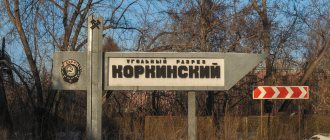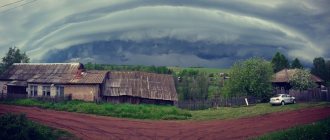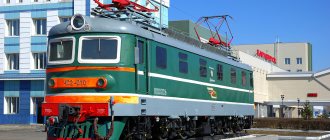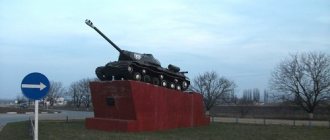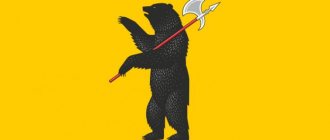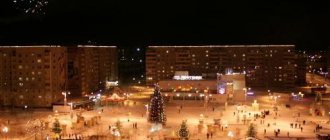When the coronavirus pandemic swept the world, many remembered the Black Swan theory. Its author Nassim Taleb called it difficult to predict and rare events that have significant consequences. Interestingly, there is a “black swan” city in the Urals. This is Yemanzhelinsk in the Chelyabinsk region. True, the history of the origin of his symbolism is, of course, completely different, having nothing to do with Taleb’s theory. In this article we will get acquainted with the history and sights of the city of Yemanzhelinsk.
History of Yemanzhelinsk
In 1929, geological exploration began in these places, and in 1930 rich deposits of brown coal were discovered. Its mining began in 1931; this year is considered the founding date of the city. The first barracks and dugouts for workers appeared. The village first received the name Black Town, and then the Emanzhelinsky coal mines. The name was given after the Yemanzhelinka river, which comes from the Bashkir words “yaman” - bad and “zilga” - “river, small river”. It could have been called that because of its swampy shores.
Gradually the village settled down, and in 1934 a club and school appeared. During the mining of coal and the construction of the city, the labor of special settlers, exiled Soviet Germans and dispossessed people was also used. In 1951, the village received city status.
Coal mining was carried out both by open-pit mines and underground in mines. Yemanzhelinsk is the southernmost city in the Chelyabinsk coal basin. In the 1990s, local mines were closed and coal production ceased. The city's enterprises remained in operation: a brick plant, a mechanical plant, a feed mill, a repair plant, and a clothing factory.
However, the city remembers and honors its mining past. The city symbols adopted in 2001 depict a black swan. It symbolizes the main wealth of the city that gave it life - coal. The swan is crowned with a golden crown - a symbol of fire and the warmth that coal gives.
Yemanzhelinsk is connected with the life of the famous film actor Nikolai Nikolaevich Merzlikin and singer, soloist of the Bolshoi Theater, People's Artist Alexander Filippovich Vedernikov. In Yemanzhelinsk, supermodel Irina Shaykhlislamova, known as Irina Shayk, was born into a miner’s family. She appeared on the covers of famous magazines and was the face of many global brands. The girl was in a close relationship with football player Cristiano Ronaldo, and then lived with actor Bradley Cooper.
The population of the city of Yemanzhelinsk is 28 thousand people.
Yemanzhelinsk Chelyabinsk Region
Yemanzhelinsk , city, center of the Yemanzhelinsky urban district and Yemanzhelinsky district. Located in the eastern part of the Chelyabinsk region, 48 km south of Chelyabinsk, surrounded on all sides by the adm. terr. Etkulsky district. Territory area city 88 km (within boundaries approved in 1951), agricultural land - 2.0 thousand hectares. Us. 30,202 people Based on the Charter of E., adopted by the city. referendum 17 Dec. 1995, local self-government is carried out within the city, the bodies of which include the city. collection dep. (28 people) headed by pres. (since 2002 B. Ya. Schwager) and the city administration (executive and administrative functions), elected for 5 years. The official symbols of Ekaterina are the coat of arms. and a flag.
The coat of arms was approved by the post. mountains collection dep. No. 89 (24 Oct. 2001), included in the Heraldry. Register of the Russian Federation (No. 884). Developed by a group of heraldists and artists: M. V. Vaganov (Zheleznodorozhny, Moscow region), Yu. V. Korzhik (Voronezh), R. I. Malanichev (Moscow), K. F. Mochenov (Khimki, Moscow region). Description: “In a silver field with an azure (blue, light blue) chipped tip, thinly bordered with gold and burdened with scaly curved belts of the same metal, a black swan with raised wings, with a golden beak and a crown of five teeth of the same metal” (see color insert) . Ch. the figure of the coat of arms - a swan - is symbolically connected with the natural resources of E. - stone. coal; it is also a symbol of beauty, harmony and agreement. City main on the river, as indicated by the bird, depicted. floating on the water surface. Silver symbolizes purity, nobility, perfection, peace; gold - strength, greatness, intelligence, generosity; azure - sublime aspiration, thinking, sincerity and virtue. Black is the color of honesty, modesty, prudence, wisdom, eternity.
Flag approved by post. mountains collection dep. No. 215 (Nov. 20, 2002), included in the Heraldry. Register of the Russian Federation (No. 1123). Created by the same Creative. group. It is a rectangular panel with a width ratio. to length 2:3, on which the main image is reproduced. elements of the coat of arms - a swan floating on a white background on the surface of the water (blue stripe 1/4 of the panel along the lower edge).
Nature . E. is located on the border of the Trans-Urals. peneplain and Western-Sib. low Relief b. h. flat, low; the terrain has a slight slope to the east. The elevation difference is from 223 to 287 m. Landscape - forest-steppe. Flat areas occupied by agriculture. crops, as well as meadows and forbs, alternate with birch trees; to the southwest on the outskirts of the city, in the area of the wastewater treatment plant, in the 1960s. a pine forest was planted. Soils are leached. and podzol. chernozems. By territory E. the river flows. Yemanzhelinka, which flows into the lake. Big Sarykul. The city has a temperate climate. belt Naib. warm month - July (max. temperature +45 °C), max. cold - Jan. (min. -45 °C). Wed. the date of the first autumn frost (in the air) is October 16, the last spring frost is May 22. Precipitation for the year falls on Wed. 436 mm, their largest number (75%) occurs in the warm season. Winter lasts. and stable, continues on Wed. 5 months, from Nov. to March; spring is short and often cold; summer is short, hot, windy; autumn is early and rainy. In winter, ch. arr. The prevailing winds are southwest. and zap. directions, in summer - north. and north-west Naib. strong winds are observed in spring and autumn, dry winds occur in May - June at a speed of 7-12 m/s (at a temperature of +30...+35 °C). Snow cover is established in the 1st ten days of November. and lasts until April 1-10. Freeze-up occurs in mid-November, ice break-up occurs in mid-April. Thickness ice reaches 30-40 cm. The fauna is very diverse: max. Rodents (forest, field and baby mice, swamp and gray rats, muskrats, white and brown hares, squirrels, hedgehogs), birds (passeriformes, corvids, etc.), fish (crucian carp, minnow, rotan), etc. are widespread. minerals are mined. coal (a strip of brown coal from the Chelyabinsk brown coal basin passes through the territory of E.) and builds. sand.
Historical sketch . The city was founded in 1931 on lands that were previously used by the Cossacks of the village of Emanzhelinskaya (see Emanzhelinka) for pastures and hayfields. In 1929, geological research was carried out. exploration discovered in the 19th century. deposit coal, a decision was made to organize stripping operations. In 1931, construction of the Severny coal mine began, and the first batch of coal was mined in July. The work was carried out at full capacity. lack of mechanization, torch lighting. The workers' settlement of earthen and reed barracks was named Black town, later - Emanzhelinsky coal mines. In 1933, the underground section began to work; in 1934, work in the North, which had become ineffective (due to the peculiarities of the occurrence of the coal seam), ceased. section. In 1934, a village council was formed, and the first school was opened (in a brick building). In the 2nd half. 1930s jackhammers, belt conveyors, and electric locomotives began to be used in production; Emanzhelinsky coal miners joined the Stakhanov movement. In 1936, mine No. 18-bis was put into operation; in the summer of 1939, mine No. 19-a was put into operation, then No. 18 (inclined); The Baturinsky open-pit mine was built. With the beginning of the Great Patriotic War, many male coal miners went to the front, approx. 900 Emanzhelin residents died in battle. Women, having mastered the professions of a miner, a coal loader, etc., supported the initiative “Girls, get to the face!” On Nov. 1941 The Baturinsky open-pit mine began producing coal.
Economic development . Intensive construction and commissioning of new mines and production took place during the war. and post-war. years. The center has been operating since the summer of 1942. electromechanical workshops, towing from Donbass, on Sept. The Rostov Mechanical Engineer was located in the workshops of the grain state farm. factory. During the war, coal mining was carried out around the clock, seven days a week; Teenagers worked alongside the women on the loading docks. In 1947 in the village. A brick factory was built in the Yemanzhelinsky coal mines. 25 Dec 1951 E. was given the status of a city of the region. submission. In 1952, mines No. 54, Krasnoselskaya and Kulyarskaya (open-pit mines No. 7, 3 and 8) came into operation; in 1962, the Vostochno-Baturinskaya mine (open-pit mines No. 1 and 2); and in 1969, a mining and processing plant. f-ka and open-pit mine No. 3 of the East Baturinskaya mine (later called Baturinskaya). On the basis of mine No. 19-a, a branch of the plant for the production of signaling equipment began operating (now the State Unitary Enterprise "Signal-Polymer"), on the basis of mine No. 54 - Yemanzhelinsky repair shop. plant (now the Ural Aggregate Mechanical Plant). In 1997, with the beginning of the restructuring of the country's coal industry, the Baturinskaya and Kulyarskaya mines were closed. E. received the status of a city with a special economy. position, thanks to which more than 1 thousand people were employed in a short time, approx. was created with funds from the state budget. 800 jobs. One after another mechanical engineering, food industry and repair began to increase production volumes. Currently in the city there are approx. 350 enterprises, institutions and organizations. Among them are the Yemanzhelinsky Mechanical Plant (produces equipment for automation and mechanization of agriculture), the Yemanzhelinsky Brick Factory, the Yemanzhelinskaya Concentrating Factory, the Yemanzhelinskaya Garment Factory (tailoring clothes for schoolchildren), a branch of people. .
Temples . Activities of the Orthodox Church E. community began in 1947 in an apartment on the street. Shakhtar, 39a. First prayer. the house opened in 1948 (clergyman - A. Zubov). In the same year, a private tree was purchased to create a church. house. In 1978 the building was attacked by creatures. rec-tion, brick walls were erected. In 1991 the Vvedensky Orthodox Church was registered. parish, its charter was adopted. In 1992, with the assistance of the city administration, a bell tower was added to the building. Since June 13, 1997, the rector is Rev. N. Trofimov. In 1999 the parish was registered as a local Orthodox church. organization of the church in honor of the Entry into the Temple of the Blessed Virgin Mary. The rectors of the temple at different times were: Rev. V. Maksimov (1949-50), I. Magnitsky (1950-53), G. Rusanov (1953-60), A. Kulikov (1962-72), A. Yakhimovich (1972-75), A. Kulikov (1975 -77); Hieromonk John (Stolpovsky, 1977-78); Archimandrite John (Buldygin); priests S. Gulko (1987-89), S. Vorobyov (1989-90); prot. A. Goldin (since 1990). Since 1998, a Sunday school has been operating at the church. It is visited by approx. 50 people, mainly children of parishioners. They are obedient in church (standing by candlelight, mopping the floor, working in the library). Teachers: E. V. Koneva and E. G. Goffman. Several school graduates continued their religious studies. training and became clergy. Muslim The E. community (since 1997 its leader K. Sharafutdinov) began building a mosque in 1996. 2 Nov 2001 the first service in the mosque was held by Verkh. mufti, chairman Center. spiritual rule of Muslims in Russia and the CIS Sheikh-ul-Islam T. Tajuddin in the presence of Mufti Chel. and Kurgan region. G. Yu. Shakaeva and mullahs of Yemanzhelinsk M. Gainutdinov.
Education . The functioning and development of the education system of Yerevan is ensured by the Department of Education of the Administration of Yerevan (formerly the city department of public education, created in 1953). Over the years, the head. department (head of department) were Z. M. Kostyusheva (1953-55), V. Z. Shchennikov (1955-58), E. K. Kuzyaeva (1958-59), M. A. Konoplyanchenko (1959-63) , L. E. Lysenko (1963-65), A. S. Nekrylova (1965-78), V. V. Krivolapova (1978-80), V. R. Arnold (1980-87), Yu. T. Golovchenko (1987-89), V. A. Kabirova (1989-90), V. I. Stoyanov (1990-91), Yu. P. Ivanov (1991-94); since 1994 V. M. Shikhaleev (see Shikhaleev). Currently, the education system of E. includes 14 general education schools, 18 preschools. institutions, 5 institutions of additional education, the Nadezhda orphanage, the Vasiliev family orphanage. Doshk. education institutions (preschool educational institutions) are visited by St. 1700 children. Educational programs are implemented in all institutions. new generation programs: “Rainbow” (author T. Doronova), “Development” (L. Wenger). Educated the process in the preschool educational institution is supplemented by partial programs: “The Road to Wonderland” (3. Tyumaseva), “Me and My Health” (T. Tarasova), “Environmental Education of Preschool Children” (S. Nikolaeva), “Rostock” (A. Shestakova) . Kindergartens are equipped with 15 sports. halls, 10 winter gardens, 12 art studios, 5 playrooms. In general education More than 6 thousand children are studying in the city's institutions: more than 1,550 in primary school, mainly. school - ok. 3600, on Wed - approx. 940, in the evening (shift) - St. 100, in correctional classes - more than 200. Naib. Means. are city schools No. 5 and 15. Wed. general education school No. 5 main. in 1993 on an incomplete basis. Secondary school No. 5 (in 1934–42 incomplete secondary school No. 20). During the Great Patriotic War, the school patronized the hospital in Korkino, and 28,836 rubles were transferred to the Defense Fund. In 1953, the school was equipped with radio, and since then weekly radio broadcasts have been held here. Issued in short circulation periodicals. newspaper. Since 1934, a chronicle has been kept in secondary school No. 5, an archive and a photo archive have been created. Currently, the school operates in 2 areas: ecology. and sports and health. A physicist and mathematician works under it. SUSU school. Secondary school No. 5 is an all-Russian laureate. competitions “School of the Year” (1996-2000) and “School of the Century”. Secondary school No. 15 main. in 1931 at the grain state farm (now the village of Zauralsky). The first graduation took place in June 1941. All the young men went to the front, many. of them died. In 1943–44, students and teachers collected funds for the production of tanks. In 1953, a new school building with a classroom was built. workshops. In the 1960s and 70s. they were equipped with machines, for which students carried out orders from the Yemanzhelinsky Mechanical Plant (17 types of parts for tractors). Secondary school No. 15 is a laureate of the All-Russian competition “School of the Year” (1998-99). More than 4,330 children are enrolled in additional education institutions operating in 8 areas (73 programs). The Cascade Children's Art House was awarded diplomas and other awards from the governor of the Chelyabinsk region. based on the results of the competition for the best sports and health institution. directions. The Rainbow Children's Creativity Center (formerly the House of Pioneers and Schoolchildren) was opened in 1953. In the 1950s. An orphanage was opened (first director P.V. Bykov). The children were sponsored by teams from mine No. 19, Baturinskaya, and the sewing factory. In 1969 the orphanage was disbanded, in 1997 it was reopened in the village. Trans-Ural (see Orphanages). The city's education system includes 2 vocational schools (No. 113 and 127). PU-113 main. in 1976 with the aim of training workers for the Emanzhelinsky Mechanical Plant (a branch of ChTZ). The first director is I. M. Miroshnichenko. Training was conducted in mechanical engineering specialties. profile: turner, milling operator, repairman, mechanical assembly worker, electrician, toolmaker. Currently, the PU trains universal turners, electric and gas welders, salespeople, cashier controllers, sewing equipment operators, hairdressers, and auto mechanics. In school In workshops, students produce sewing products, plumbing tools, and gardening tools. Director: V. D. Timchenko. PU-127 was formed in 1964 on the basis of the School of Agricultural Mechanization (in 1942–48 - FZO School No. 10 for training workers for coal mines and open-pit mines of the Yemanzhelinskugol Trust; in 1948-56 - Mining and Industrial School No. 2; in 1956-64 - middle village vocational school No. 2). Currently, the school is receiving a trace. profession: technical master maintenance and repair of the machine and tractor fleet, auto mechanic, estate owner, general-purpose tractor driver, pastry chef. PU-127 has a branch in the village. Karataban (Etkul district), where machine operators are trained. On the lands of the teacher The farm grows grain crops, vegetables, and potatoes. Since 2001 dir. school V.V. Kalitventsev.
Sights of Yemanzhelinsk
At one of the entrances to the city there is a stele with an image of a black swan. The symbols of the city are found in many other places.
The main central attraction of Yemanzhelinsk is the City Square . You can get to it along Lenin or Gagarin streets. From the side of the bus station, at the entrance to the square, there is a symbolic gate of the city - the Arc de Triomphe .
Nearby is a monument to the victims of political repression , erected in 2008. On the back of the monument there is an inscription: “Your suffering cannot be measured, cannot be redeemed at any cost, we believe in your innocence, we will not allow this to happen again!” A decorative chapel was built nearby.
In 2010, the sculpture “Good Angel of Peace ” was installed in the park. It is a 10 m high column, which is crowned with a gilded figure of an angel with outstretched wings and a dove in his hands. The angel stands on a hemisphere that symbolizes the Earth. The same monuments, intended to be good, exist in many other cities in Russia and the world, including Chelyabinsk.
The park has a children's playground and attractions. In summer there is a fountain decorated with a sculpture of two black marble swans. There is also a small lake with a decorative lighthouse.
On the one hand, the City Square has interesting monuments and architectural forms, but on the other hand, the square seemed somehow empty to me - there are too few trees. After the publication of this article, a local resident contacted me and said that it turned out that the park had been created recently. There used to be houses on this site. I hope that trees will grow here over time.
A continuation of this square is Victory Square. Here, near the building of the School of Arts, there is a monument “Cranes” , dedicated to the Great Patriotic War.
Not far from the City Square is the Palace of Culture named after. A.S. Pushkin (Gagarin St., 5a). Opposite the cultural center is the City Memorial Complex . It began in 1967 with a marble obelisk of glory in memory of those killed on the fronts of the Great Patriotic War. In 1977, it was replaced by a memorial wall lined with marble. Subsequently, the memorial complex was reconstructed several times and its appearance changed. Today, an eternal flame burns here. There are plaques on the marble walls with the names of the dead local residents. There is also an alley in memory of soldiers who died in Afghanistan and Chechnya.
In 2007, in honor of the centenary of the Chelyabinsk coal basin, the Miners' Walk of Fame . Here stands a sculpture of a miner in a helmet and overalls, with a metal arc on top that symbolizes the roof of the mine. Next to it are 284 names of dead miners.
Behind the Palace of Culture, on the street. Lenin, there is Komsomolskaya Square with a monument to Lenin.
Near the intersection of Shakhtar and Herzen streets you can see the Moskvich-401 monument . On the pedestal stands a vintage car - a Moskvich of the first model, produced in the early 1950s. The monument was created in 2011 with funds from local entrepreneurs N.M. Osipov and V.G. Vezorgin, who own the auto parts store located here.
There is also the Yemanzhelinsky Museum of History and Local Lore (Chkalova St., 16, tel. (35138) 2-18-10). The museum consists of four halls: historical, folk history, nature and an exhibition hall.
The area around the city is flat, there is a forest-steppe zone. There are many flooded coal mines . Some of them are quite picturesque, especially the Turquoise quarry .
South-east of the city is located Lake Bolshoi Sarykul, . The name is translated from Bashkir as “yellow lake”. The essay “Tender Lake Sarykul” by the famous writer Vitaly Bianki is dedicated to this lake. There he talks about a hunter who got lost in the reed thickets, who wandered for a long time, but was never able to reach civilization and died from exhaustion.
At the beginning of the 20th century, the area of the reservoir was 103 sq. km, making it one of the largest lakes in the region. By 1993, the area had decreased to 66 sq. km, the lake was very overgrown with reeds and reeds. The average depth of the lake is 1 m, the maximum is 3 m.
The lake is famous for its birds. This is a real paradise for them. There are about 60 species of birds, including swans, geese, cranes and many others. According to Chelyabinsk State University teacher, author of works on the geography of the Chelyabinsk region A.I. Levita, in terms of the abundance of birds, Big Sarykul has no equal in the Urals!
Lake Big Sarykul became shallow after the construction of a drainage canal to the neighboring Lake Big Duvankul. The permission to lower the lake was signed by Stalin himself in 1952. The water level in Sarykul decreased by 3 m, and in Duvankul it rose by 4 m. Draining of the lake was necessary to extract coal from its bottom. A new cut appeared, which, however, was quickly abandoned.
But the flooded Lake Duvankul was adapted for fish farming. The Chelyabinsk fish farm stocked it with peled, grass carp, silver carp, carp, and sturgeon. In 1988, Duvankul produced a record 800 tons of fish, but then the catches began to fall.
Yemanzhelinsk
(Chelyabinsk region)
OKATO code:
75409
Founded:
1930
Urban settlement since:
1932
City since:
1951 City of district subordination (Emanzhelinsky district, Chelyabinsk region)
Center:
Yemanzhelinsky district
Telephone code (reference phone)
| 35138***** | 22-9-99 |
Deviation from Moscow time, hours:
2
Geographic latitude:
54°45′
Geographic longitude:
61°19′
Altitude above sea level, meters:
220 Sunrise and sunset times in the city of Yemanzhelinsk
How to get there?
Yemanzhelinsk is located 50 km south of the city of Chelyabinsk. By car from Chelyabinsk you need to take the road to Troitsk, then turn at the sign for Yemanzhelinsk. Do not confuse it with the village of Yemanzhelinka, which will be at the entrance to the city. You can easily get there by public transport - regular buses run from Chelyabinsk.
During the trip, you can also visit the Korkinsky coal mine, the Koelginsky marble quarry (the largest in Russia), and continuing the journey you can see the sights of Troitsk - the sunniest city in the Urals.
Pavel Raspopov
Parks and squares
New park
Laid down on May 15, 2011 parallel to the street. Engels.
City square
The largest park in Yemanzhelinsk (in 2011). The square has a fountain, the architectural composition “Stella - the Angel of Peace” or “The Good Angel of Peace”, a children’s playground, a monument to the victims of Stalin’s repressions, a “chapel”, a “gate to the city”, a pond and attractions.
Sports park
The second largest park in the city. Located on the territory of the Typhoon Center. The sports park has a children's playground, a basketball court, a “Europe-Asia” composition (still under construction as of September 2011), etc.
Komsomolskaya sq.
The only square in the city. Crosses the street square. Lenin. The only attraction of the square is the monument to V.I. Lenin.



